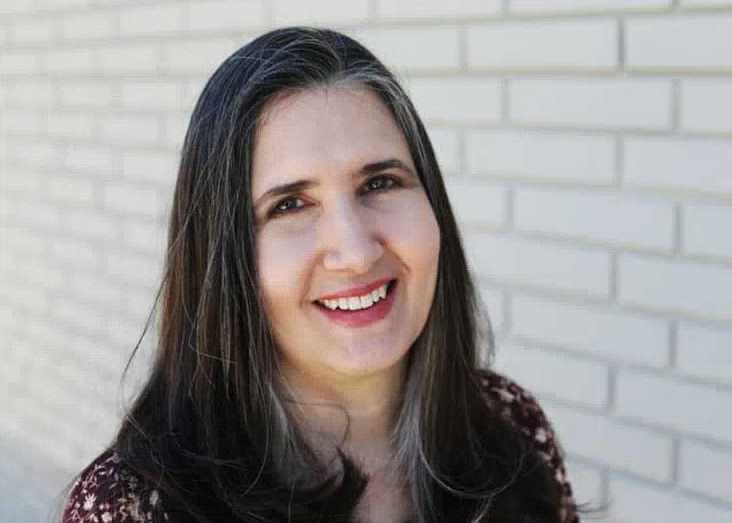Don't silence your vote
At last count, nearly one in three eligible Americans still aren’t registered to vote.
Whether that’s due to apathy, disenchantment or just plain irresponsibility, given the flexible options available there’s simply no excuse. The vote was too hard-won, and if we have anything to complain about, not participating is no way to fix it.
A disproportionate percentage of those eligible yet not registered tend to be poor, young or both. That means local, state and national government policies are less likely to represent the people whose futures will be the most affected by them.
Today is National Voter Registration Day. Originated by a nonpartisan coalition of voting advocates, in its inaugural year of 2012 more than 300,000 eligible Americans registered, exercising the most fundamental democratic right. To date, that number exceeds 5 million.
It’s helping some, but registration is only the first hurdle.
The last national midterm elections had a slightly higher turnout than 2020’s, increasing more than 2% to reach a high of 69%, according to the U.S. Census. Local elections have much lower turnout.
That’s simply not good enough.
Robust voter turnout is fundamental to a healthy democracy, and as close elections keep proving, it makes a difference. Low turnout can be a symptom of self-centeredness, uninformed apathy or political disengagement — the mistaken yet increasingly common belief that voting changes nothing.
That notion is as globally illustrative as it is inaccurate; established democracies tend to have higher turnout than do countries with authoritarian regimes.
Here, votes matter.
Yet even comparing more democratic systems, turnout among eligible U.S. voters ranks lower than the world’s average. According to Pew Research, voter turnout worldwide ranges from around 90% in Australia and Belgium (who have compulsory voting) as well as Uruguay and Turkey.
It’s 80% in Austria, Sweden and Philippines; and around 70% in parts of Western Europe and other economically developed democratic countries.
Historical U.S. voting rates hover near the 60-65% range during presidential elections, in the mid-40s for mid-terms, and even less in local elections.
One way to improve registration rates is to reconsider methods. Election Day registration has helped, but only a little. Why have an opt-in system? We could try opt-out.
Some countries make registration automatic with eligible-age citizenship, called universal registration. In it, voting wouldn’t be mandatory, but automatic registration could easily increase participation.
A compromise approach gaining ground in the U.S. is called “automatic voter registration” or AVR. In 25 states (not Idaho), eligible adults are automatically registered with consent when they interact with the DMV or certain state agencies.
Opt-out systems could significantly reduce fraud, making duplicate registrations much harder. Eligibility could be based on routinely checked birth and citizenship records (ending with death certificates or legal process), rather than relying on applicant-submitted proof. Citizens wouldn’t need proactive steps to figure out how, where and when to register.
Preserving this right has always been a concern. Very early in this immigrant nation’s history, new states worried about the growing number of transients (rather than those who came to stay) participating in local government, so a national registration system was created in the early 1800s to ensure non-citizens couldn’t vote.
It was effective, yet unfair, as it favored the wealthy. When assessors came by to register working-class men, most weren’t at home. Some historians say this was no accident, as the poor and disenfranchised tended to vote differently from the rich.
It wasn’t just the poor whose voices were silenced. Even after legalized slavery ended, state laws lagged, leaving out new African-American citizens. New state voter registration systems weren’t uniform, causing a rash of lawsuits, constitutional amendments, and confusion.
Finally, in 1965 the Voting Rights Act created federal examiners who investigated electoral offices, especially in the South, to ensure nondiscriminatory practices. The result was a million new voters.
Still not good enough.
Increasing fairness and reducing discrimination helped, but we lacked ease. So in 1993 the National Voter Registration Act required states to let citizens register by mail or at the DMV or other public office. This netted 9 million new voters.
Better, but still too far from the goal.
If you aren’t registered, have moved or changed name, you can get the short, mail-in registration and update forms at voteidaho.gov, or register in person at your county’s clerk or election department.
If you forget before Nov. 5, don’t skip voting; election day registration works at your polling place with state-issued photo ID or passport, and proof of residence such as a recent electric bill. If you need help getting information, feel free to email me.
“Nobody will ever deprive the American people of the right to vote, except the American people themselves. And the only way they can do this is by not voting.” — Franklin D. Roosevelt
• • •
Sholeh Patrick is a columnist for the Hagadone News Network. Email sholeh@cdapress.com.

